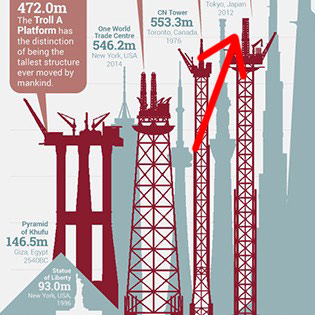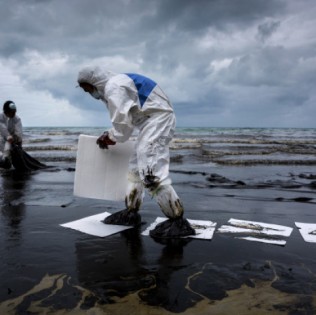by TheOGM
Published on April 2nd, 2014
World Leading Exploration Site: A Paradise For Pioneers
One of the most significant offshore opportunities in history is happening right now offshore Newfoundland and Labrador.
The Canada-Newfoundland Offshore Petroleum Board (C-NOPB) has released a scheduled land tenure system for the province’s offshore oil industry. The opportunities are immense, the offshore land resources are up for sale, and there’s an effective and trustworthy system for investing in this region.
“The new scheduled land tenure system positions Newfoundland and Labrador with the leading exploration jurisdictions in the world,” said Jim Keating, vice president, Nalcor Energy – Oil and Gas.
A scheduled land tenure system, developed by the Canada-Newfoundland Offshore Petroleum Board (C-NOPB), improves the investment climate of the offshore by improving transparency, predictability, and input. The system provides additional time for exploration companies to conduct geoscientific assessments of the hydrocarbon prospectivity in the lesser explored basins of the Newfoundland and Labrador offshore arena.
Companies may then nominate Areas of Interest, which may be included in a Call for Bids. The system will now operate in four-year, two-year and one-year cycles and is designed to take into account variances in the volume of data collection in basins and geoscientific knowledge.
Under the new system, the Newfoundland and Labrador Offshore Area will be subdivided into three categories based on level of oil and gas activity. Low Activity regions generally have few exploratory wells and limited seismic data acquisition. High Activity regions typically have elevated activity levels including 2D and 3D seismic data acquisition and exploration drilling. A Mature region would have substantial 2D and 3D seismic data coverage, in addition to extensive exploration/delineation drilling and production activities.
The Different Time Cycles And The Schedules Are As Follows:
- The four-year cycle will be implemented for all regions that fall within the Low Activity category. In this cycle, a Call for Nominations (Areas of Interest) will be announced in the fall of the year and the Call for Bids (Parcels) will close in the fall, four years later. This cycle will be announced every two years and will provide interested parties with as much as 48 months to explore and assess the region.
- The two-year cycle is designed for regions classified as High Activity. In this cycle, a Call for Nominations (Areas on Interest) will be announced in the fall of the year and the Call for Bids (Parcels) will close in the fall, two years later. This cycle will be announced every year and will provide interested parties with as much as 24 months to explore and assess the location defined in the call.
- The one-year cycle will be maintained for the Mature region. As has been the case in the past, a Call for Nominations (Areas of Interest) in the Mature region (e.g., the Jeanne d’Arc Basin) may go out every year in the fall, the Call for Bids (Parcels) will be announced in the spring of the following year, and the Call for Bids (Parcels) will close in the fall of the same year. This cycle will proceed annually based on nominations from interested parties and assessment by the C-NLOPB.
- The one-year cycle will also be maintained for any lands not publicly announced in the scheduled system. Any Call for Nominations (Areas of Interest) and Call for Bids (Parcels) will proceed annually based on industry nominations and assessments by the C-NLOPB. This model will mirror the schedule discussed for the Mature region.
Effective immediately, for licences under the new system, “allowable expenditures” are defined as those respecting an exploration licence incurred from the initial announcement of the Call for Nominations (Areas of Interest) for that scheduled round, up to and including the effective date of an exploration licence issued from that round. This is in addition to the traditional allowable expenditure terms and conditions which can be found in the sample exploration licences offered in the Calls for Bids 2013 on the C-NLOPB website.
Keating said, “Nalcor’s geoscience program is opening new frontier basins in our offshore areas and is capturing the attention of the international oil and gas industry. Now, with scheduled land sales, we are providing these global players with the time they require to assess the data, make plans for exploration and then submit competitive bids according to those plans.”
The land tenure system encourages exploration in frontier areas and allows adequate time for new seismic data to be acquired over prospective regions prior to licence rounds, thereby informing the investment decisions of the global oil and gas industry. That makes investing in the region predictable, reliable and secure.
To learn more about the land sales offshore Newfoundland and Labrador, visit: http://www.cnlopb.nl.ca/news/nr20130516.shtml.
Did you enjoy this article?

 How Tall are the World’s Largest Offshore Oil Structures?
How Tall are the World’s Largest Offshore Oil Structures? Atlantic XL - Big Name, Giant Vision
Atlantic XL - Big Name, Giant Vision Risk Reduction With Marine Institute Offshore Simulator
Risk Reduction With Marine Institute Offshore Simulator The Revival of the Gulf Coast, USA
The Revival of the Gulf Coast, USA These 4 Women of Distinction are Shaping the Offshore Industry
These 4 Women of Distinction are Shaping the Offshore Industry
